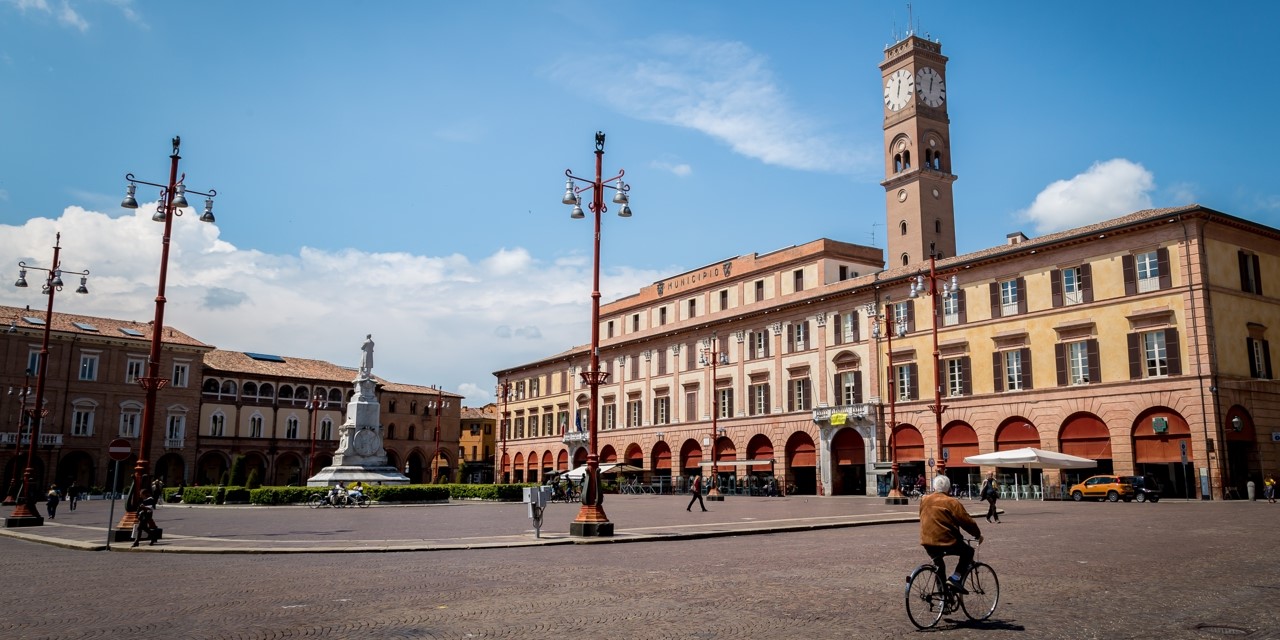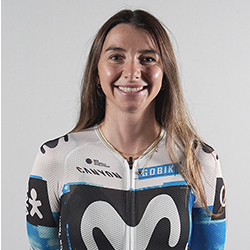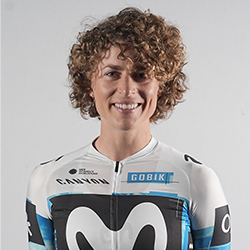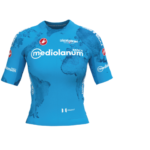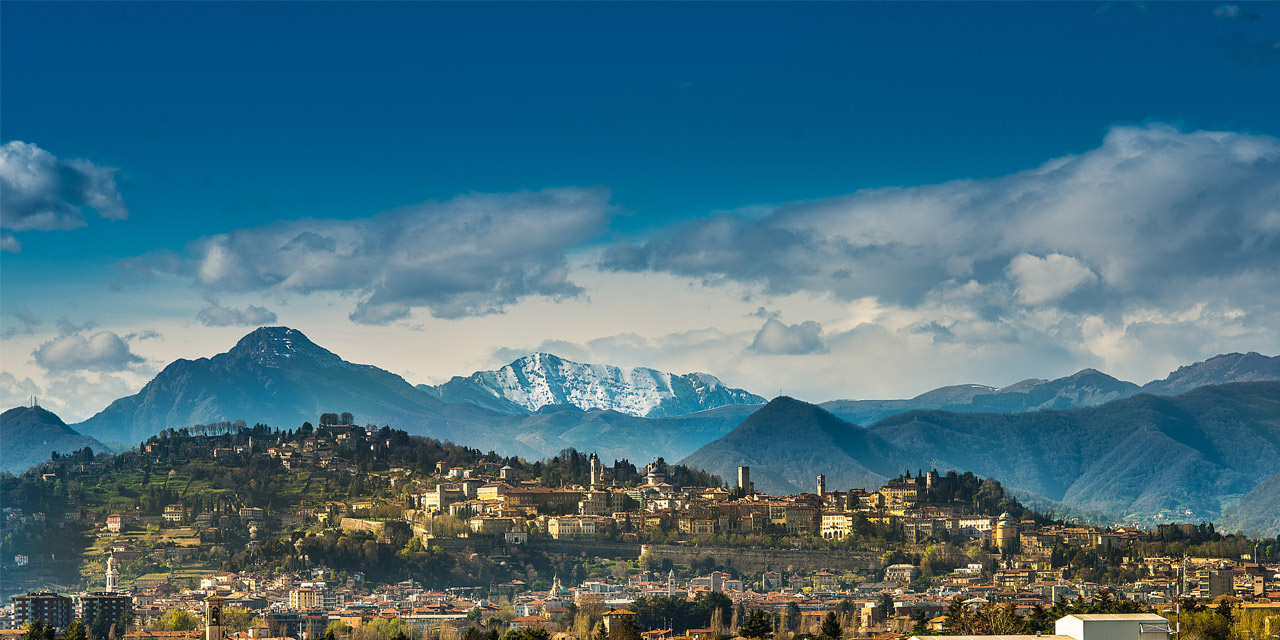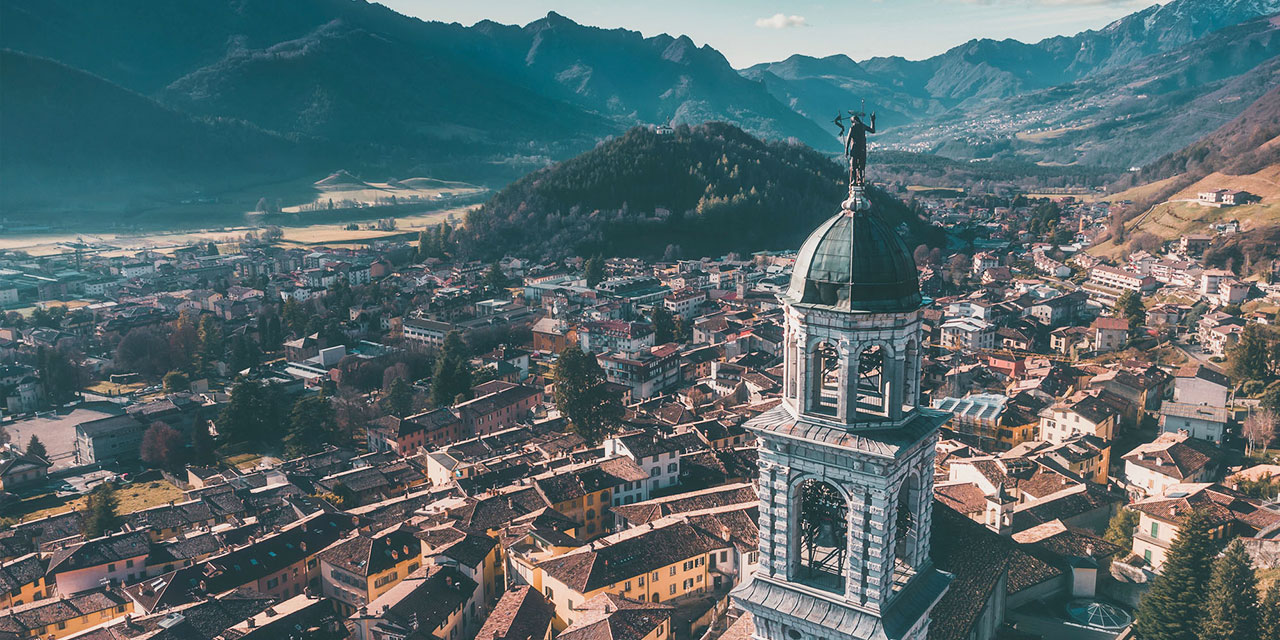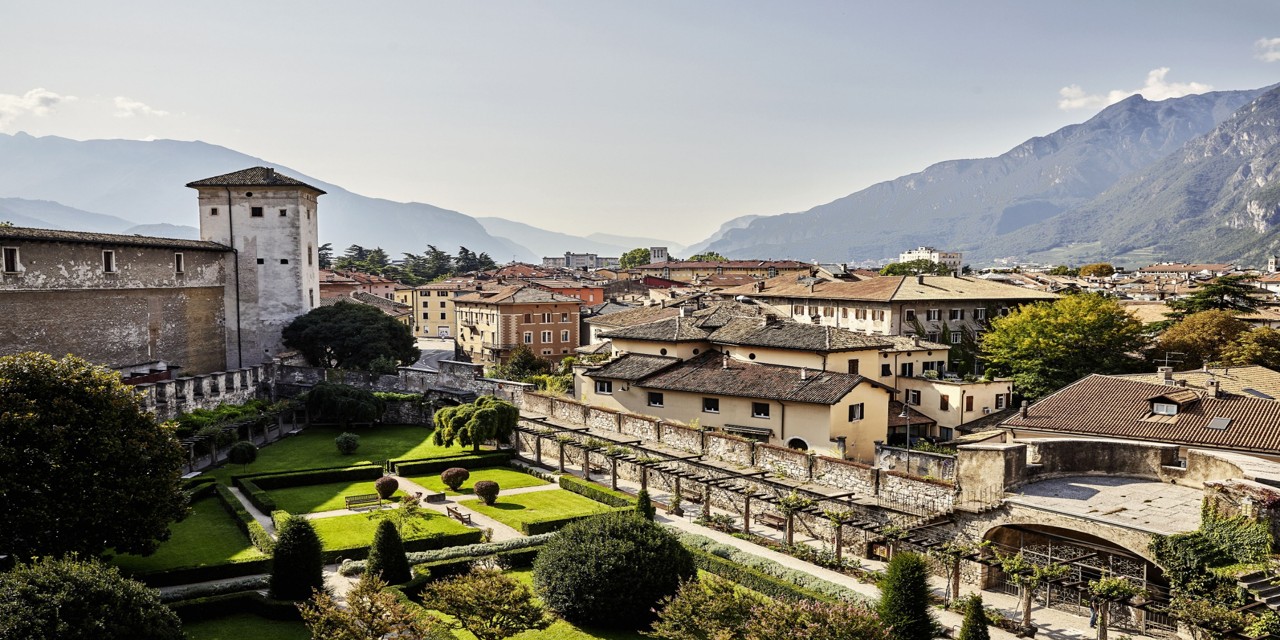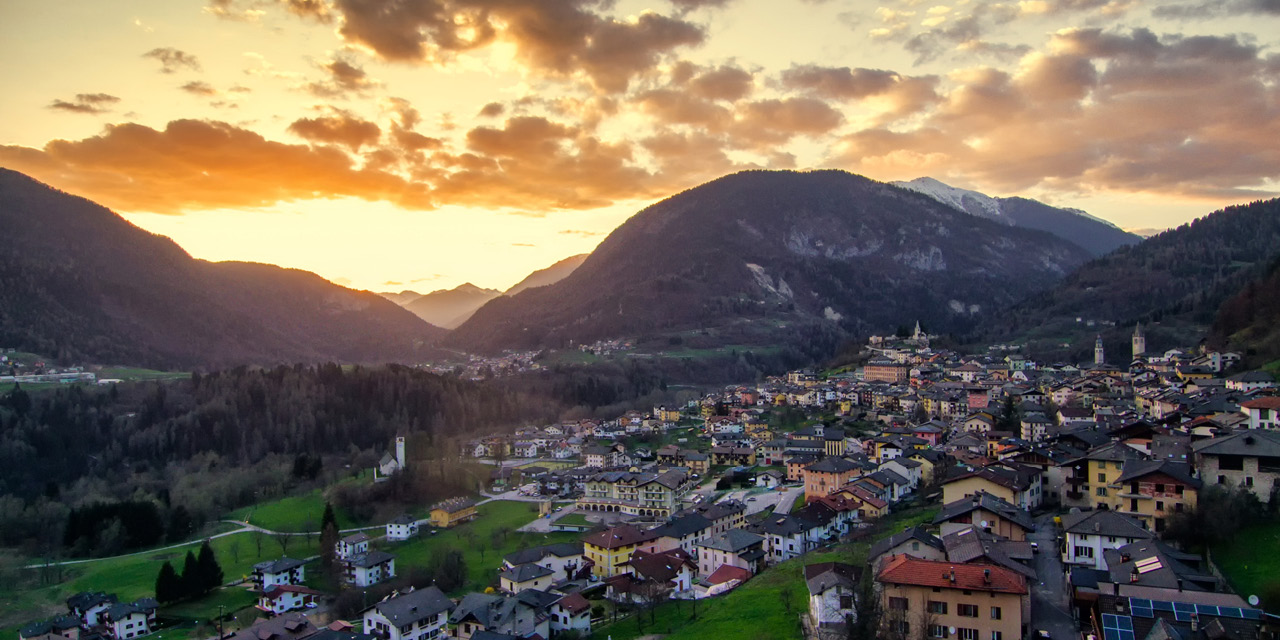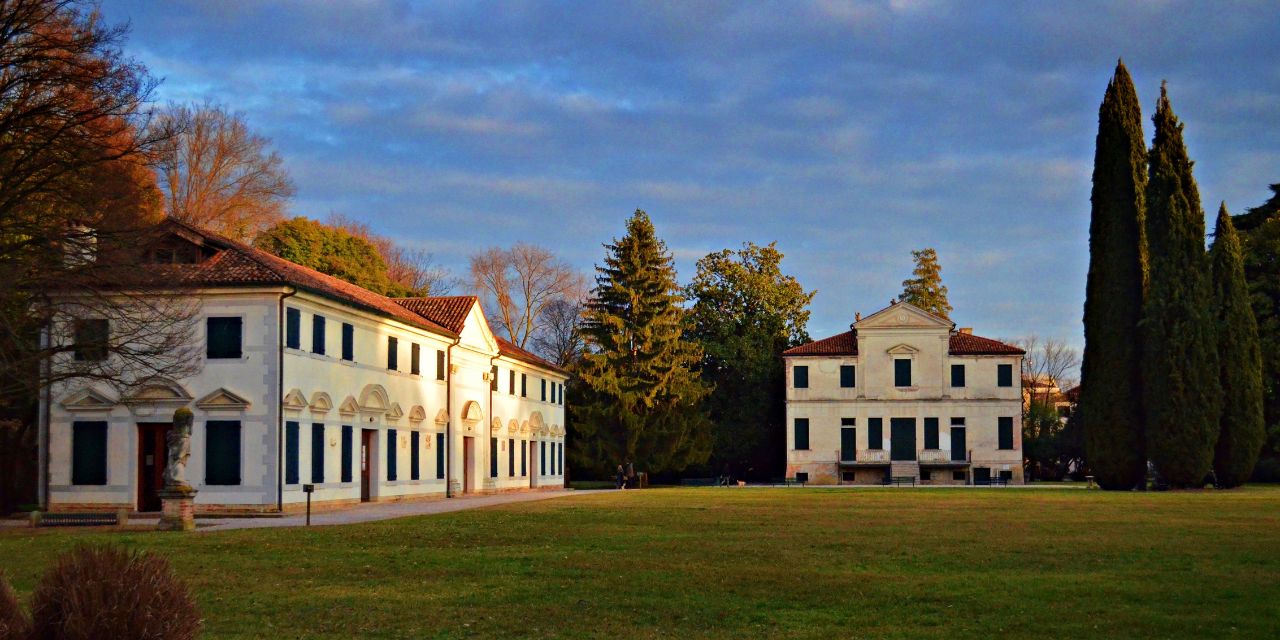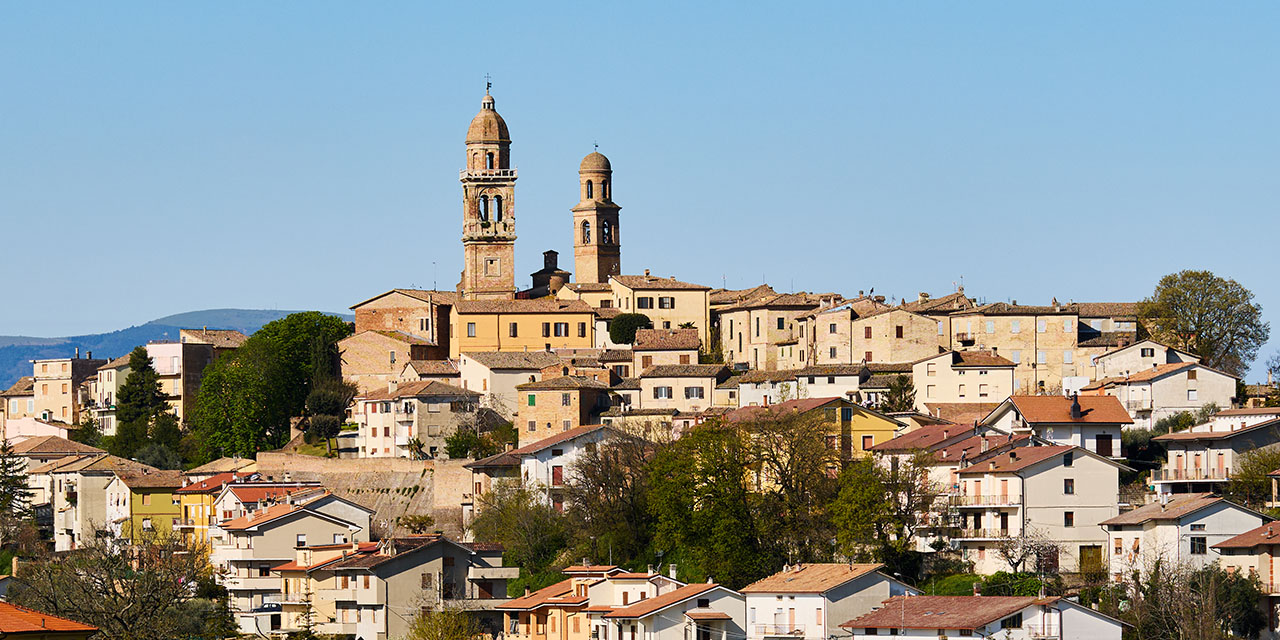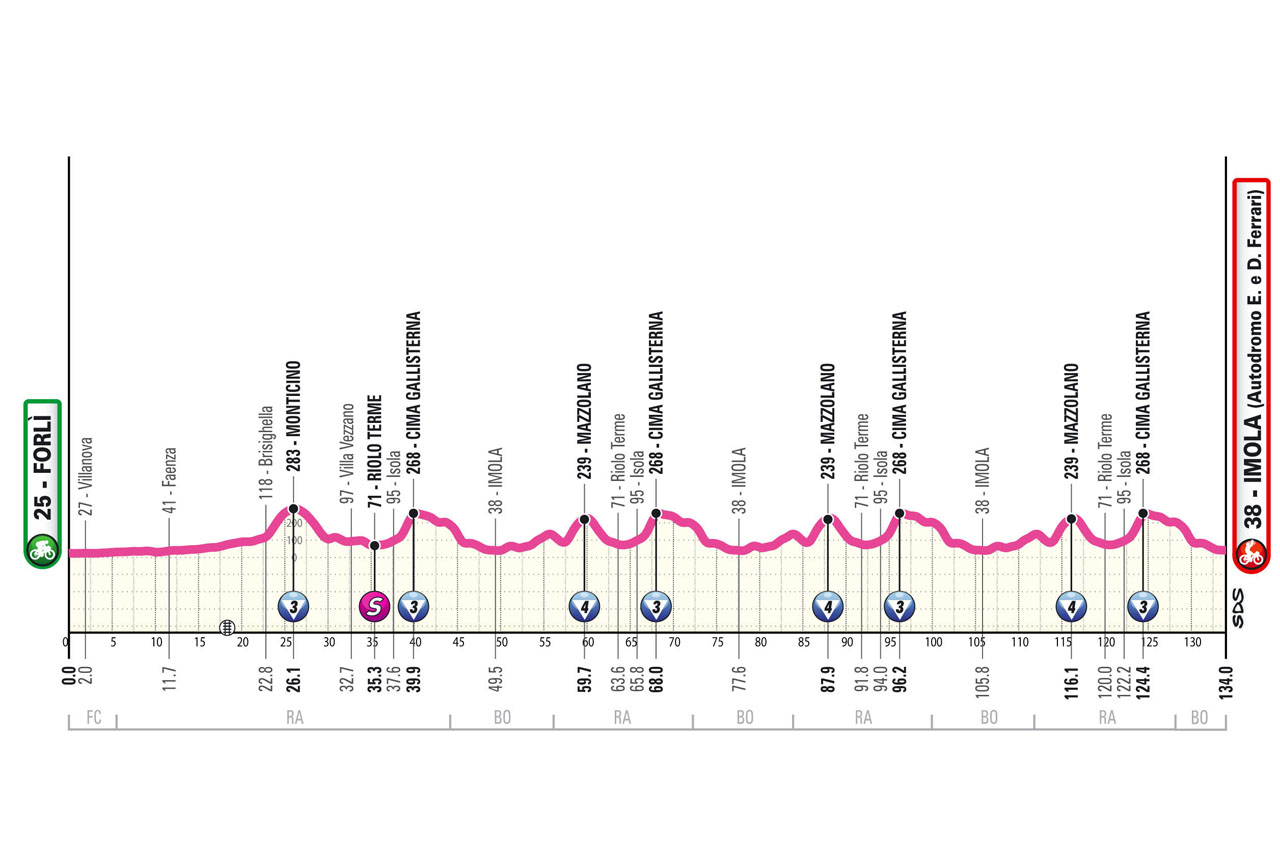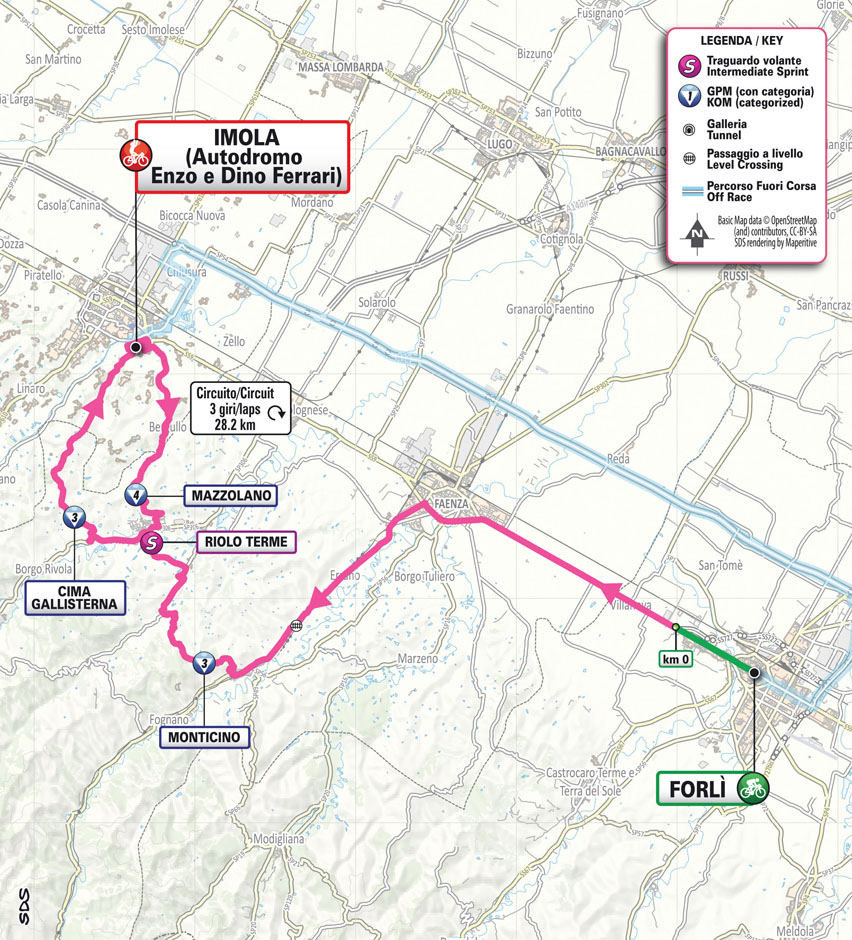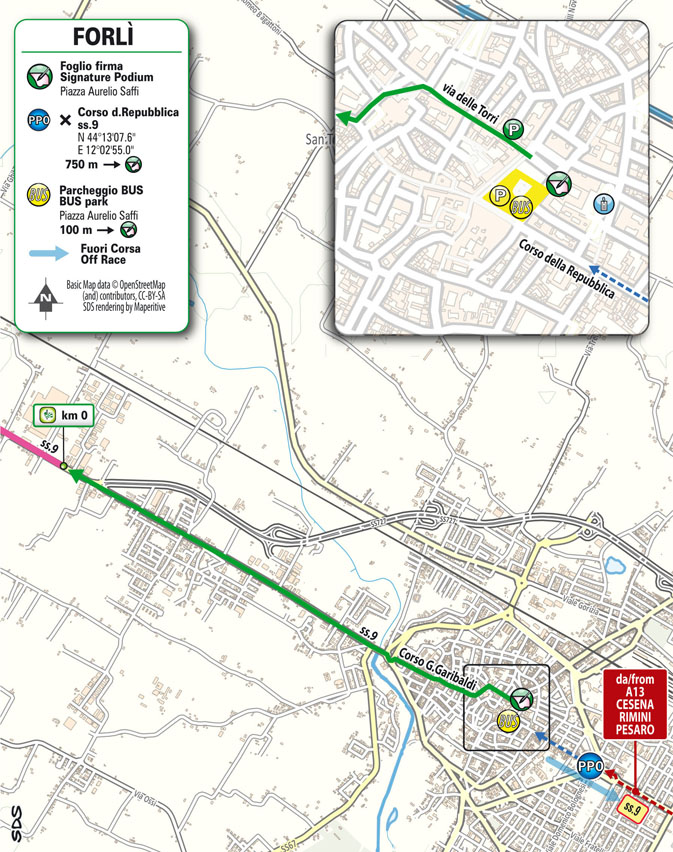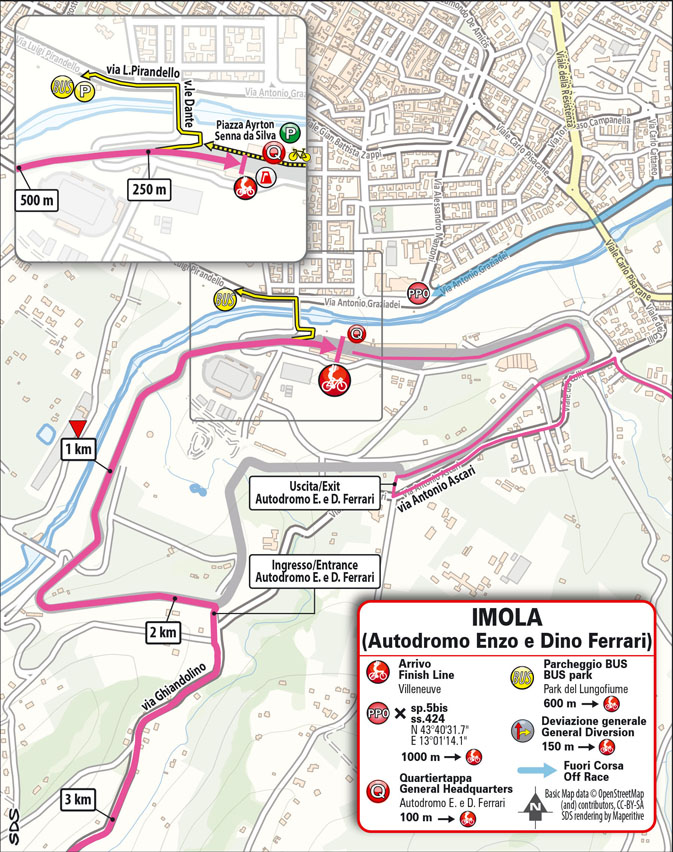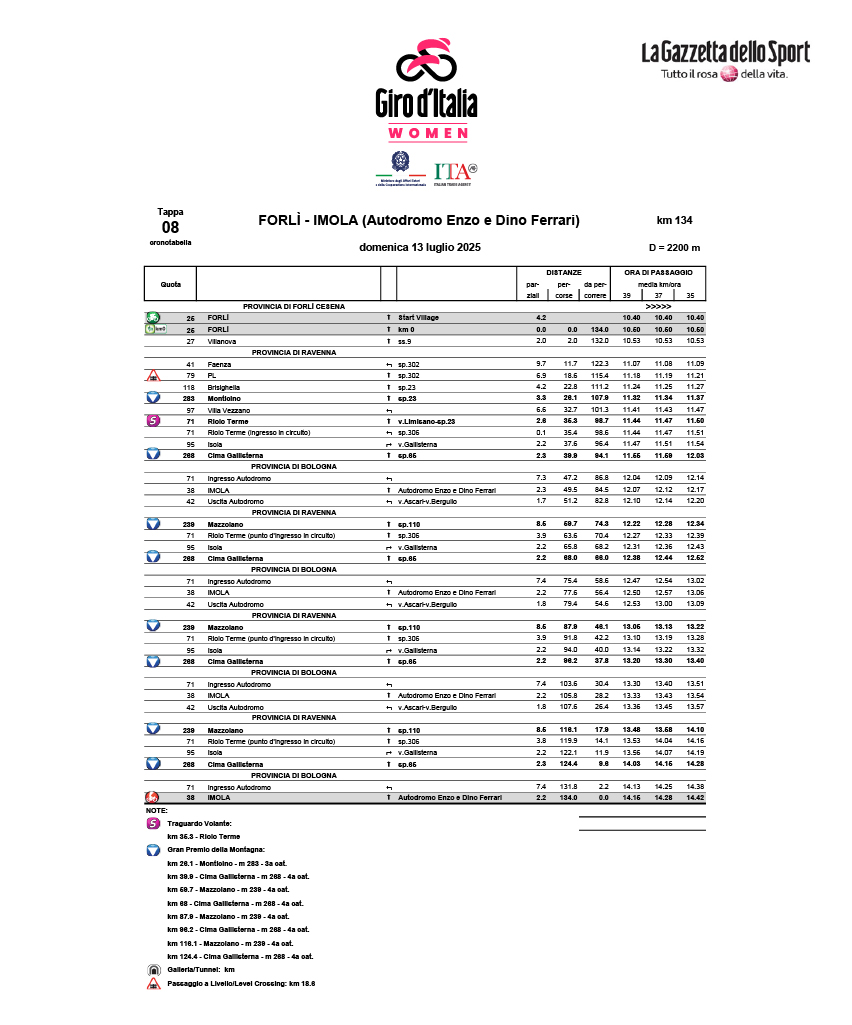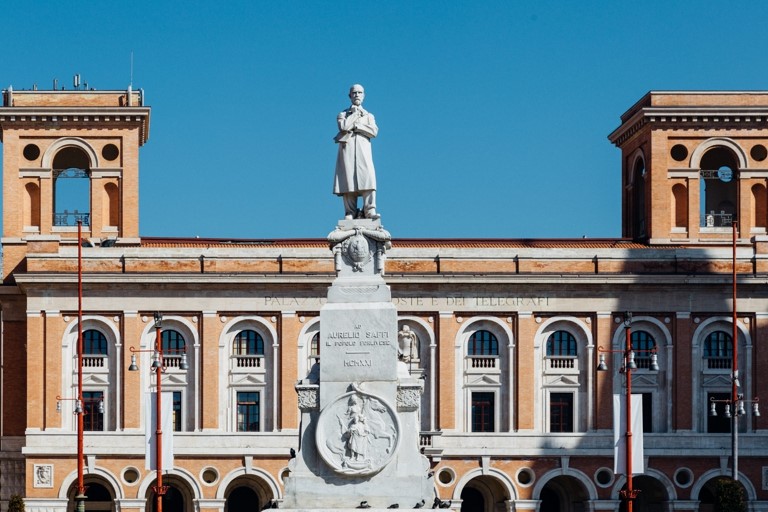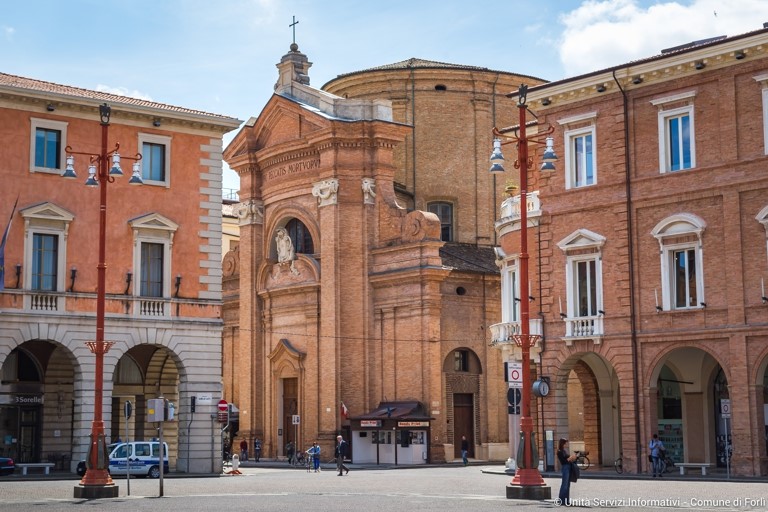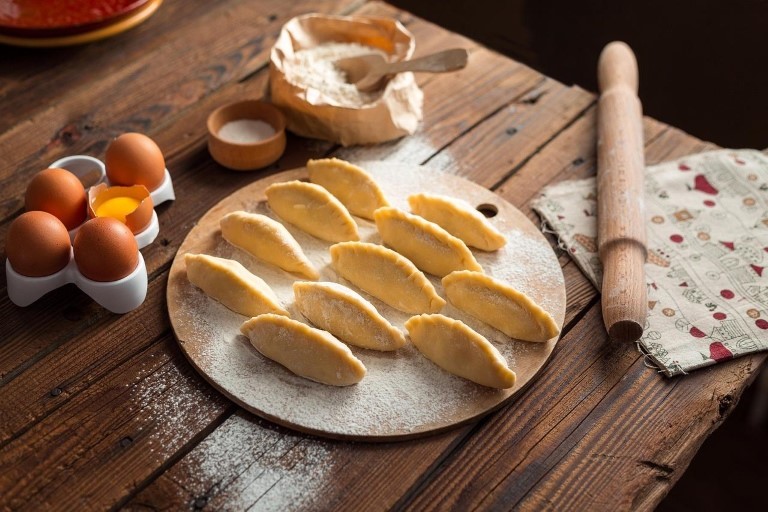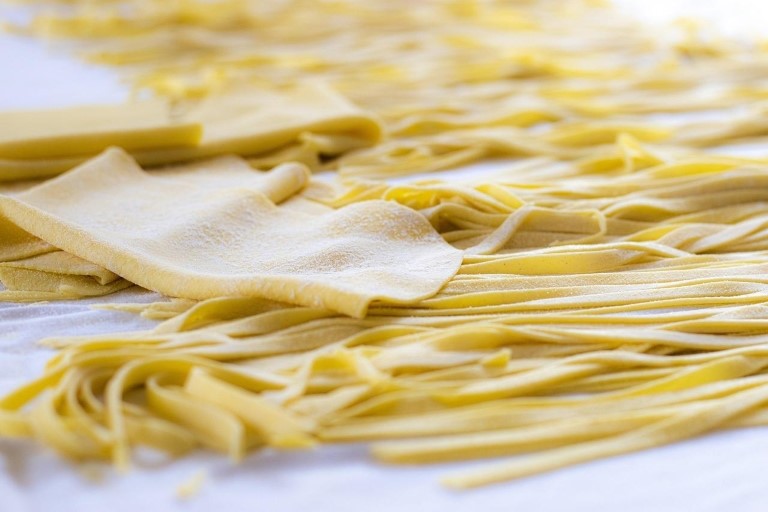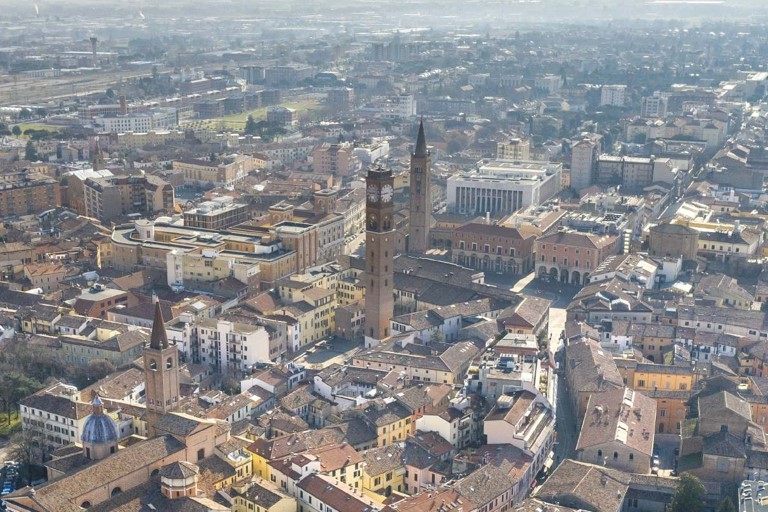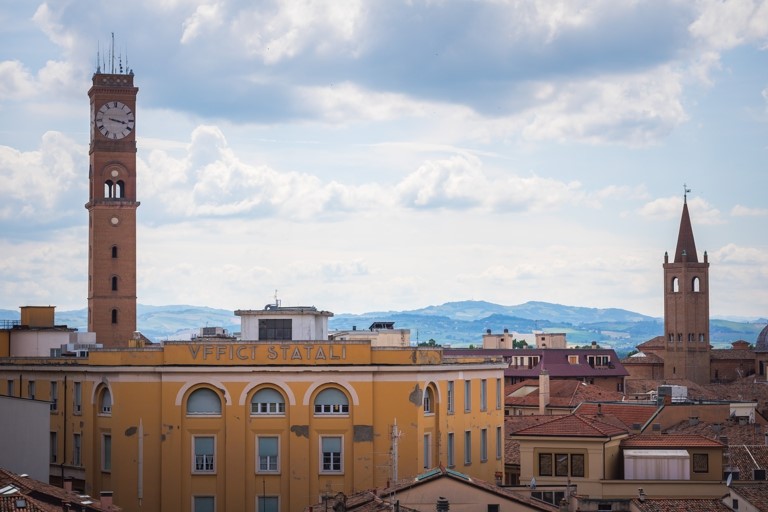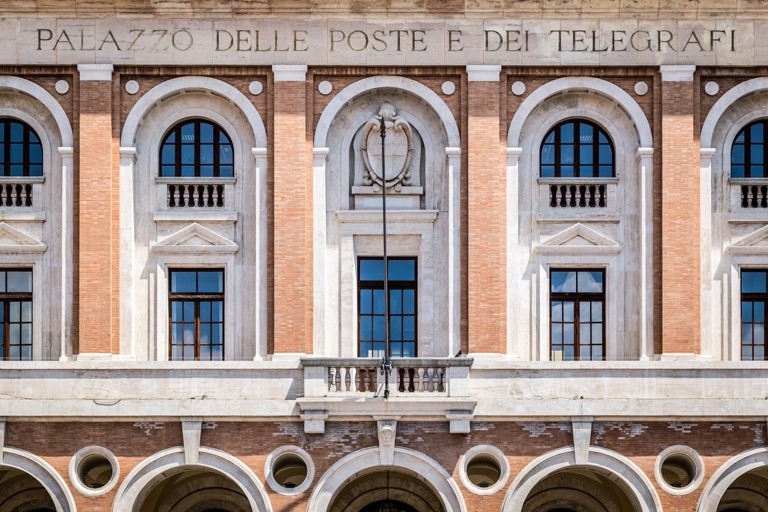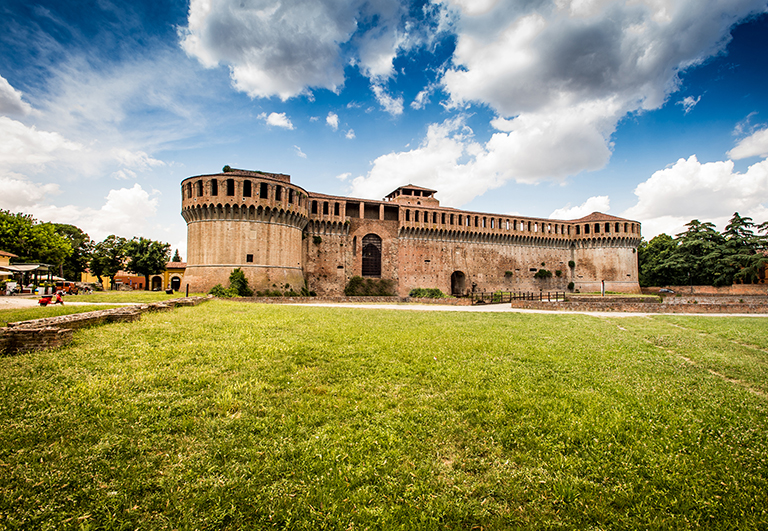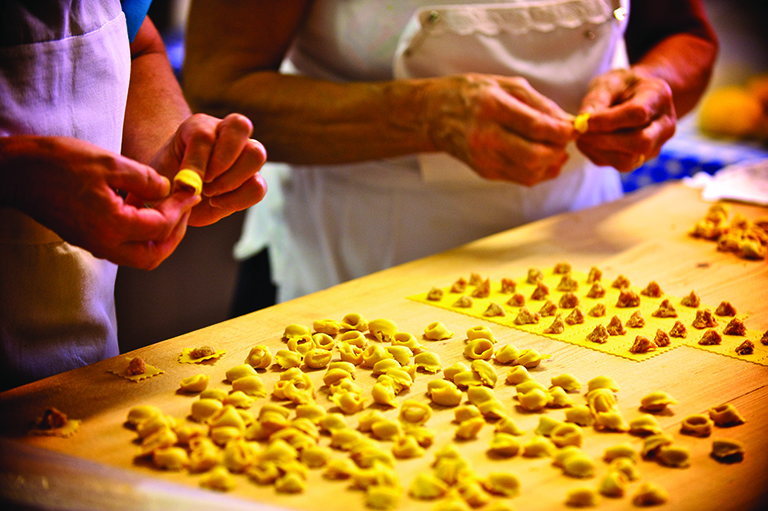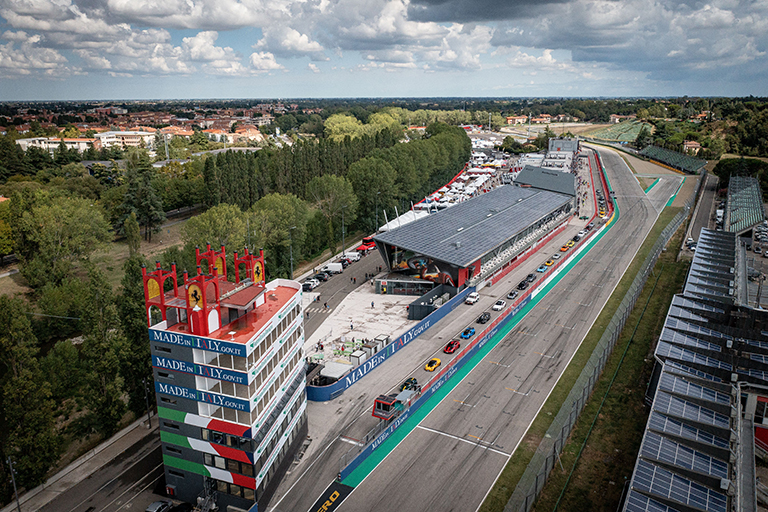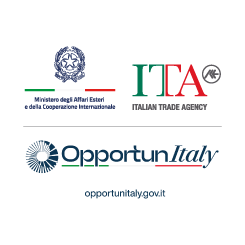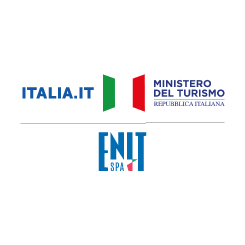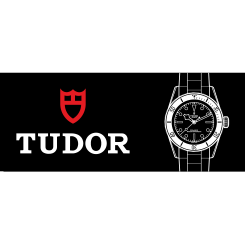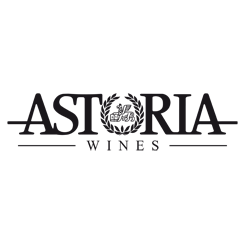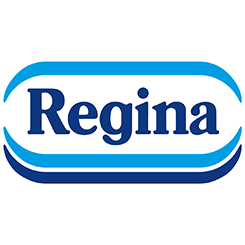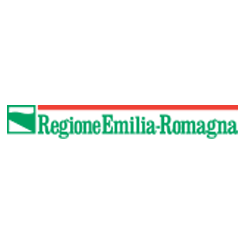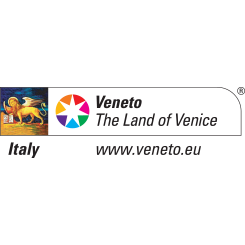learn more
technical info
profile
map
technical info
A challenging final stage in medium mountains. After a short flat section at the start, the riders enter the same circuit used for the 2020 UCI Road World Championships, to be tackled four times. It features the demanding climb of Cima Gallisterna and the ascent of Mazzolano, with intermediate passages and the grand finale inside the Enzo and Dino Ferrari Racetrack.
Final kilometers
The final circuit partially runs inside the Enzo and Dino Ferrari Autodrome in Imola. Riders enter the track approximately 2.2 km from the finish line, racing clockwise around the circuit. The last corner comes at 550 meters to go, followed by a long, slightly curved finishing straight, 8 meters wide, on perfectly leveled asphalt.
start / finish
final kilometres
itinerary timetable
tourist info
Host city:
Forlì
Overview
Founded by the Romans in the II century B.C. as the Forum Livii at the crossroads of Via Consolare with the road that led to Tuscany, the city is located in the eastern part of the Po Valley along the Via Emilia, a few kilometers from the seaside resorts of the Adriatic coast (30-35 km) and at the foot of the green hills of the Tuscan-Romagna Apennines.
Food
A symbol of Forlì is passatelli, a type of noodle cooked in broth. How can you turn down a traditional piping hot piadina, in the local shops? Although good with any filling, it is usually eaten with squacquerone, a soft cheese typical of the area, ricotta or cold cuts, and always accompanied by rich Sangiovese wine. To enjoy the culture and the local produce, just follow the Road of Wines and Flavors of the hills of Forlì and Cesena.
Points of Interest
In the historic center, two main roads of Roman origin are still recognizable, divided into four main streets: Mazzini, Garibaldi, Diaz and della Repubblica, which converge on Piazza A. Saffi. Some of the most emblematic buildings of different eras are found there:
– the Lombard Romanesque Abbey of San Mercuriale with its imposing 12th century original bell tower;
– the Palazzo Comunale, the Town Hall, dating from the fourteenth century and rebuilt several times, with the Torre Civica (or the clock tower);
– the 15th century Palazzo del Podestà and Palazzo Albertini;
– the 20th century Palazzo delle Poste, an example of Rationalist Architecture also seen in significant traces in the buildings of Viale della Libertà and Piazzale della Vittoria, near the train station.
– Cathedral of Santa Croce (Duomo) Forlì, in Piazza Ordelaffi: one of the symbols of the religious and civil history of the city and there is news of it since the tenth century. A large fresco in the apse of the presbytery, a work of 1863 by Pompeo Randi, illustrates the “invention and recognition of the Holy Cross” to which the church is dedicated.
The city was under the domain of the Ordelaffi family for about two centuries, during which Forlì was enriched with noble palaces that can be admired while walking along the streets of the city center, in particular Corso Garibaldi and Via P. Maroncelli. Pino Ordelaffi III is responsible for the fortification of the Fortress of Ravaldino (completed in 1480, now known as the “Rocca di Caterina Sforza”).
Also noteworthy is the Baroque architecture of two prestigious monuments, which were recently restored: the Church of the Suffragio as you enter Piazza Saffi, and not far away, the Church of San Filippo Neri, on Via G. Saffi.
Forlì is a destination that can be visited all year round. During the summer, in particular with the “Arena Rocca di Caterina”festival, a real theatre is set up in the evocative setting of the courtyard area of the Ravaldino Fortress, which hosts a rich programme of events including shows, musical events, cabaret and book presentations
Just a short distance from Piazza Saffi, the main square, it is worth spending some hours at “Franco Agosto” City Park, a unique green area in Italy – in part due to its position in the urban fabric next to the old city walls – for its botanical variety and for its size. The park covers a large surface, bordered by the Montone River and the green area belonging to the City Hospital (Pierantoni). It is perfectly equipped for any requirement: restaurants, bars, children’s play areas, sporting facilities, refreshment spots, entertainment and leisure opportunities round out the offerings of the park.
Imola
Overview
Situated on the banks of the River Santerno, where the Tosco-Romagnolo Apennines meet the Padana Plain, Imola is located in a wonderful position, 30 km from Bologna and only 60 km from the sunny beaches of the Riviera Romagnola.
Known all around the world for its racetrack, Imola is the ideal place where you can spend a couple of days enjoying culture, sports and delightful food and wine tours. The elegant mansions and the Rocca Sforzesca are only a few attractions of the historical centre, which can be visited completely on foot. Moreover, the evocative background of the Apennines and the high-level sports facilities make Imola the right place for nature and sports lovers. Imola offers to bicycle lover one of the most developed ciclying paths of Emilia Romagna, covering over 100km, making the two wheels the perfect means of transport to get to know Imola. Imola is also known for its events including races and rock concerts held in the Autodromo, the “Imola in Musica” and the “Baccanale”.
Food
Remember, Imola is also the gateway to Romagna, which means that any historical-cultural tour simply has to be accompanied by an itinerary for the tastebuds, giving visitors the opportunity to discover the local delights of cappelletti, garganelli, tagliatelle, friggione, piadina, ciambella, ravioli and the excellent Colli d’Imola wines.
The Imola area is rich in typical products and traditional recipes, celebrated during festivals. Garganelli, also known as maccheroni al pettine, are one of the staple egg pastas typical of the Imola tradition. Once they were cooked and served in broth, but today they are generally served with various seasonings. Piadina romagnola (“pié” in local dialect) is an unleavened type of bread boasting very ancient origins. It was cooked on “testo”, a stone located on embers which has now been replaced by a regular iron frying pan. Piadina romagnola is the symbol of regional gastronomy and is should be eaten like a sandwich filled with local cold cuts or with soft cheeses such as squacquerone.
For over 700 years, the traditional ciambella (a local version of a bundt cake) has also been known as the Brazadela. Usually oval in shape, ciambella has a golden, crunchy outer crust and a fluffy, dry body. Simple, with a slightly rustic flavour, it’s one of those ageless recipes that evokes childhood memories. So good, so genuine: best enjoyed on its own or, as the locals like it, deliciously tociata (dunked) in wine.
For over 30 years, Bacchanal has been held in Imola in November, a festival dedicated entirely to food that involves not only the city but also the surrounding municipalities. The name of the event is clearly a celebration of the god Bacchus, as if to emphasize how the surrounding hills are an ideal territory for the cultivation of vines. Visiting Imola during this event means embarking on a journey into the world of local gastronomy, ranging to ever new and unexpected horizons that place food and wine culture at the center of everything. An ever-changing program full of meetings, exhibitions, shows, tastings, market exhibitions and, of course, thematic menus.
The theme chosen for the 2024 edition, scheduled for Oct. 19 to Nov. 10, is “A Thread of Oil,” an expression that refers to multiple aspects of local cuisine and culture. Olive oil in particular (but not only) has accompanied our gastronomic culture for millennia and has maintained, throughout this time, its characteristics and qualities unchanged. Imola’s link with oil has recently been strengthened. In fact, Imola has joined, just in 2024, the National Association of Oil Cities. In closing this brief journey among food and wine excellences, the San Domenico Restaurant in Imola, awarded two Michelin stars, should definitely be mentioned. In business since 1970, the restaurant was born with the idea of showcasing the cuisine of Italy’s noble houses, with great attention to traditional flavors. Today the restaurant is a landmark of international cuisine thanks to the passion and constant research of chef Max Mascia.
Wines
As for wines, the choice is rich: among the reds, Sangiovese DOC and among the whites, Albana DOCG. The locality is located along the Colli d’Imola Wine and Flavor Trail.
Points of Interest
The layout of the city – the ancient colony Forum Cornelii – still recalls the typical pattern of Roman foundations. Embedded in the cobbles – where the via Appia and via Mazzini intersect, almost in the shadow of the municipal clock tower – is a large diamondshaped stone: it marks the exact centre of ancient Roman Imola, the crossroads of the decumanus maximus and cardo maximus.
It’s the ideal point from which to begin discovering the town, taking an itinerary that starts beneath the medieval vaulted ceilings of the Palazzo Comunale (Town Hall) and continues beneath the elegant colonnades that flank Piazza Matteotti: colours and materials are those of Romagna tradition, the warm red of terracotta and the delicate yellow of sandstone.
A short distance from the piazza stands one of the most beautiful 18th century buildings in Imola, Palazzo Tozzoni. Donated to the city intact with its furnishings and the family art collection, it is now a splendid civic museum. Visiting the residence-cum-museum of Palazzo Tozzoni is like time travel. It takes visitors directly to bygone centuries, immersing them in the life of an aristocratic family. Continuing along via Garibaldi you come to the Cathedral of San Cassiano, on the right. A little further on comes the town’s symbol, the Rocca Sforzesca, a splendid example of military architecture between the Middle Ages and the Renaissance. Visitors can admire the collections of weapons and ceramics, examine the artillery in the basements, see the dungeons that once held prisoners.
The town centre, however, reserves many surprises: at its heart stand the old convent complexes of S. Francesco and S. Domenico, the Museo e Pinacoteca Diocesani e delle Carrozze (Diocesan and Carriage Museum and Art Gallery). The building opposite the Cathedral of San Cassiano once housed the offices and quarters of the high prelates of the town Curia. Even the stable courtyard is a treasure trove, with its lapidarium and a carriage museum displaying the sumptuous coaches of Pope Pius VII, used when he was bishop of Imola.
The Hospital Pharmacy, inaugurated in 1794 and largely intact with regards to furnishings and decorations, is a fascinating example of a 18th century pharmacy, enriched by the decorated vaulted ceiling and by 457 antique majolica vases displayed in carved wooden cabinets. The city of Imola is world famous for its circuit, the Autodromo Internazionale Enzo and Dino Ferrari, which has hosted major motorsport events since 1953. Ideal destinations for open air sports and activities are Tozzoni Park, Bosco della Frattona Natural Reserve and the green area of Acque Minerali Park, inside Enzo and Dino Ferrari International Racetrack. For cycling enthusiasts, the Santerno Valley offers scenic vistas of remarkable beauty leading into the territory of the Parco Regionale della Vena del Gesso Romagnola, which has earned recognition as a UNESCO World Heritage Site.
Videos Stage 08

Giro d'Italia Women 2025 | Stage 8 | Highlights 🇬🇧
13 Jul 2025
Giro d'Italia Women 2025 | Stage 8 | Last KM 🇬🇧
13 Jul 2025
Giro d'Italia Women 2025 | Discovering Stage 8 with Suzuki
13 Jul 2025

